Sustainable fashion? This might seem to be a niche issue to less informed consumers. Let’s try to shake things up. Immediately. Let’s find a mirror and look at our image reflected on it, focusing not on our face but on what we are wearing. Let’s now ask ourselves a few questions: where have our trousers been made? what material is the t-shirt we wear on our skin day and night made of? what is the deal with the jumper for which we paid a few euros in the sale? There are other issues which seem not to concern us directly, from an individualistic point of view, but which interest us more than we think: who is behind the clothes we are wearing? what is their impact on our planet? It would be easier to elude these questions, as they don’t affect us. And yet reality, which goes beyond personal interests, shows that the fashion industry is the second most polluting at global level after the oil industry.
There are people working at different levels to remedy this world problem. One example is WRÅD, a brand created in 2015 on the initiative of three young designers: Matteo Ward, Silvia Giovanardi and Victor Santiago. Together, they started not only a mere brand with commercial purposes, but a movement organised around the process of raising consumers’ social awareness on the themes of ethical fashion. From a simple startup, WRÅD has in fact become a best practice recognised all over the world, which also offers educational formats in the sector. Over time, it has branched out developing a digital community and creating a network with other organizations like Cittadellarte Fashion B.E.S.T. and Fashion Revolution to name a few. Throughout the years, placing design and innovation at the service of sustainability has gained the brand numerous awards, the most recent of which is a special mention by the Gallery of Italian Excellences. Prompted by this acknowledgement, we publish an interview with Matteo Ward, co-founder and CEO of the brand.

Let’s start from the special mention WRÅD received in the context of the 100 Italian Excellences 2020. What does this award represent for you?
Receiving this acknowledgement in 2020, following a particularly complex year, was especially gratifying for the whole WRÅD community. In the last year, all our team has constantly worked to make WRÅD’s purpose and objective even more relevant, actually reaching in 2020, I believe, a new level of awareness and maturity. We simply asked ourselves: what can we do to support our customers and partners in this particularly difficult set of circumstances? The award recognised our effort, a sign that change is possible and that, all together, we can bring it about.
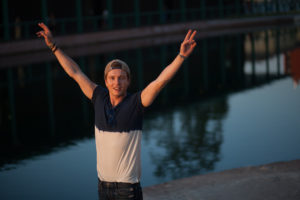
The fashion industry is the second most polluting at global level after the oil industry. What makes your items of clothing ethical instead? As a fashion designer, do you feel the responsibility to contribute to the achievement, in your sector, of the UN’s 17 Sustainable Development Goals?
The fashion industry, one of the most impacting in the world, must deal with the fact that it cannot be allowed to legitimately consume essential resources for life on Earth anymore in order to produce non-essential (and, what’s more, polluting and non-recyclable) goods. From the very start we have therefore tried to assign the product with a functionality that transcends it. For us, this has never been only about choosing ethical materials or supply chains. The beauty and complexity of our work lies in trying to engineer products and processes able to create a truly positive value and to meet humanity’s real needs. We think that the product must be a polyfunctional instrument to face and respond to challenges and objectives like the ones presented by the United Nations with the SDGs, but always using a systemic approach.
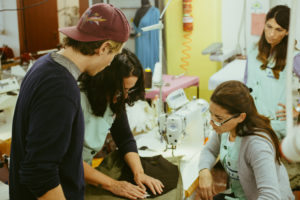
We have recently seen more attention going towards sustainability by numerous companies in the fashion sector. Do you think it is a way to adapt to the market or that, trends aside, there is a real ethical concern?
Each company has its own truth: working a lot also as consultants to third parties I can confirm without any doubt that many companies have genuinely intensified or started elaborating strategies of sustainable development. Others deal with sustainability in a dangerously superficial way instead, just so that they can meet market requirements. Communication is often used as a means to create more confusion, spreading wrong or false messages, in a historical moment in which we desperately need truth and certainty. Greenwashing practices should be made illegal: we are talking about a field of action on which the lives of billions of people depend.
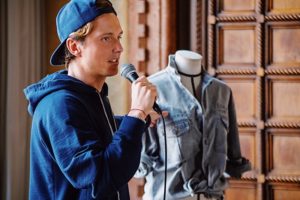
WRÅD collaborates with other fashion designers who work with sustainability as their key driver. Can working as a network be useful to feed social awareness on the theme of sustainable fashion, also among the youngest generations?
The network is still our lifeline, constantly fuelling us to question the status quo. Working in synergy, thus creating an economic symbiosis, is the key to generate truly functional ecosystems and the change of paradigm that we are all hoping to achieve. Also because, as you say, it allows us to communicate to a wider public and to all of our communities of reference.
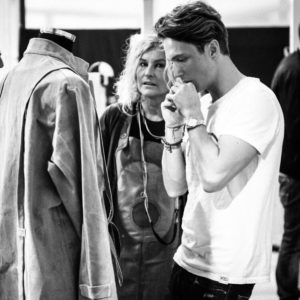
Olga Pirazzi and Matteo Ward.
Talking about working as a team, you have been actively collaborating with Cittadellarte’s Fashion Office for a long time. How relevant has Fashion B.E.S.T. been in WRÅD’s growth?
We first presented our product to all the stakeholders in the sector (i.e. media, designers and artists) at Cittadellarte in 2017. On that day all the GRAPHITEEs (our t-shirts dyed with recycled graphite) that we had brought to Biella for the exhibition sold like hot cakes! Let’s say that I took it as a compliment, the product was clearly well liked. And we have not parted since: we have been lucky and honoured to be able to rely on Cittadellarte’s community to continue innovating our design and production methodologies, which has driven us to improve and to overcome the limits towards a shared direction.

You have been the protagonists of many initiatives and projects with Fondazione Pistoletto, like White Milan, CirculART, the Rooms of Sustainable Fashion, teaching at Accademia Unidee. What do you believe you have given Cittadellarte and Cittadellarte has given you throughout the years?
Cittadellarte has definitely given us opportunities, inputs, inspirations and, as mentioned before, philosophical bases on which to build and grow our activity. It has also allowed us to enrich and give depth to the projects we have curated thanks to the active involvement of the foundation, its artists and its designers. I wouldn’t know what we have given Cittadellarte, I would rather let Paolo Naldini (director di Cittadellarte) and Olga Pirazzi* (in charge of Cittadellarte’s Fashion Office) comment on that.

In the food industry, ingredients provide the basic information on the quality of the product. In an item of clothing, the label is the only thing that reveals details on the product. The labels currently on the market specify material and provenance; do you think that this is enough, or that the industry should use narrating labels in order to create more informed customers?
These two dimensions are still missing in the fashion world because there is not enough information on materials and their real impact, and it can’t be assumed that everybody knows the meaning of PA or PC, which appear on over a half of the items of clothing in our wardrobes. Not only that: there is no immediate understanding of the fact that what we wear can have a negative effect on our body, directly through our skin and indirectly through the impact textile production has on the environment. We must also consider that when we buy clothes, we don’t generally activate the rational part of our brain, we tend to use the automatic, instinctual and emotional side instead, which responds to other impulses.
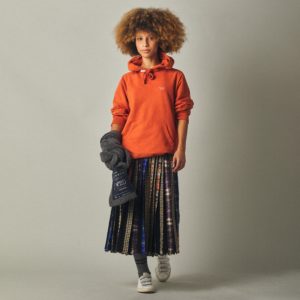
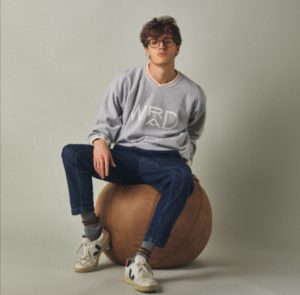
One of the problems with ethical products is their price tag. How can sustainable clothing be made affordable for the less affluent?
The business model will inevitably change with the implementation of rental, swap and pay-in-instalments formulas, which will make more affordable those products whose price tag actually reflects their social, environmental and human value.
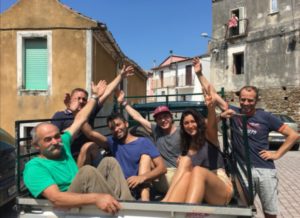
Should WRÅD take the form of an item of clothing, what would it be and how would you describe it?
It wouldn’t be an item of clothing but a functional service able to meet requirements going beyond the need to wear clothes, suitable to transform people into activists for change, inclusive and inspirational.
Can sustainable fashion change the world? And if it can, how?
Sustainable fashion doesn’t exist. There are more or less responsible products, resulting from the work of people oriented to reestablish the ability of design to respond to humanity’s real needs without causing damage. These are the people that will change the world.

